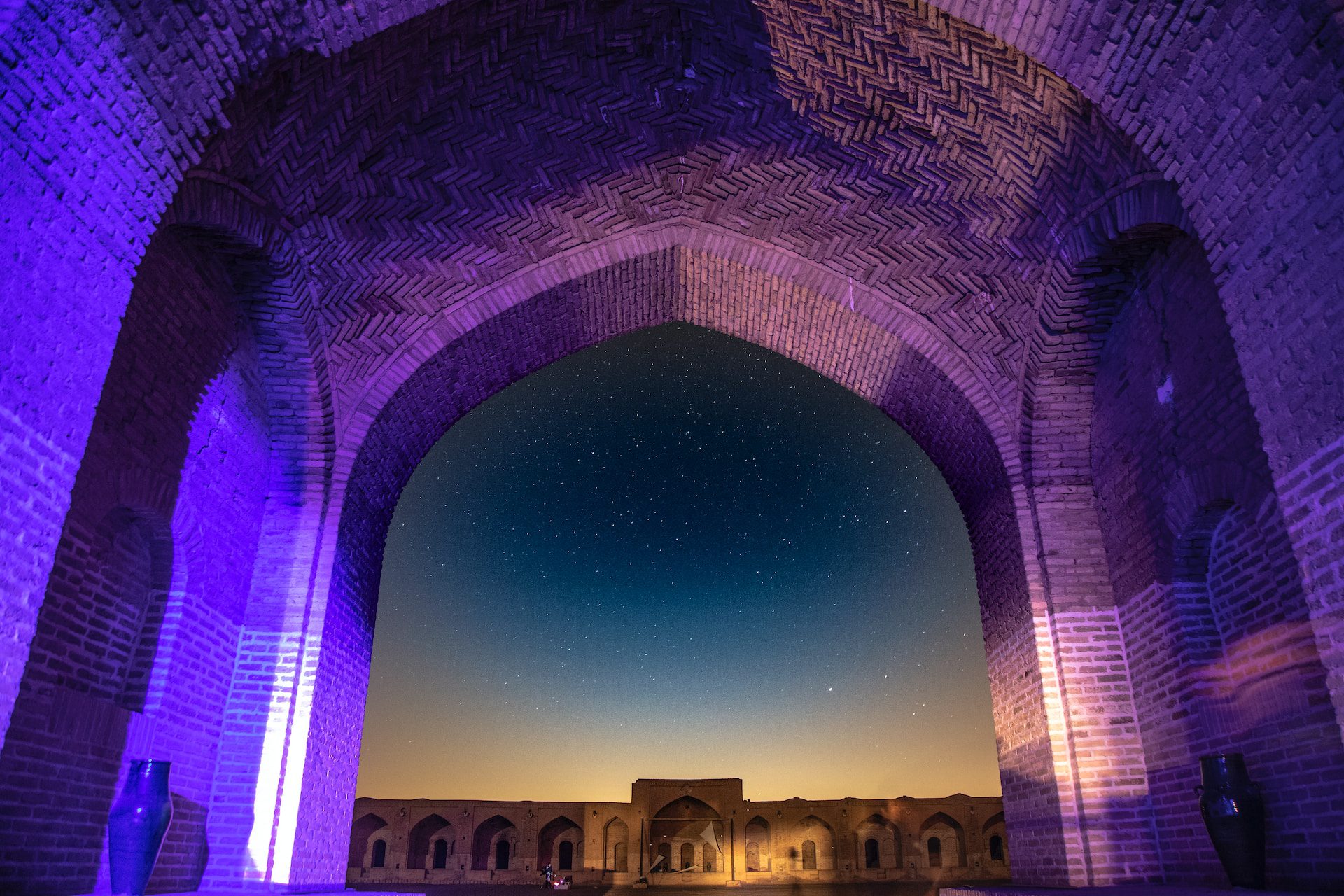Table of Contents
If you are looking for an authentic cultural experience in Iran, look no further than the country’s stunning caravanserais. Recently honored by UNESCO, these old buildings, once crucial stops on the Silk Road, have not just survived the years; they’ve become like time capsules, holding onto stories from the past. Now, as part of UNESCO World Heritage Sites, these ancient locations are officially recognized worldwide as precious cultural treasures.
With its towering walls and watchtowers, the Caravanserai Silk Road was designed to offer the utmost protection to travelers and their precious cargo. Each was strategically located along the busiest Silk Road routes, roughly 20-25 miles apart. Today, these magnificent structures stand as a testament to Iran’s rich history and the resilience of its people.
For those seeking an authentic experience, there is no better way to immerse yourself in the history and culture of Iran than by staying in one of these ancient locations. From the moment you step inside, you will be transported back in time, surrounded by the same walls and arches that have stood for centuries. Whether you are exploring the nearby desert or simply relaxing in your room, you will feel the peace and tranquility that can only be found in such a unique and historic setting.
Caravanserai Meaning
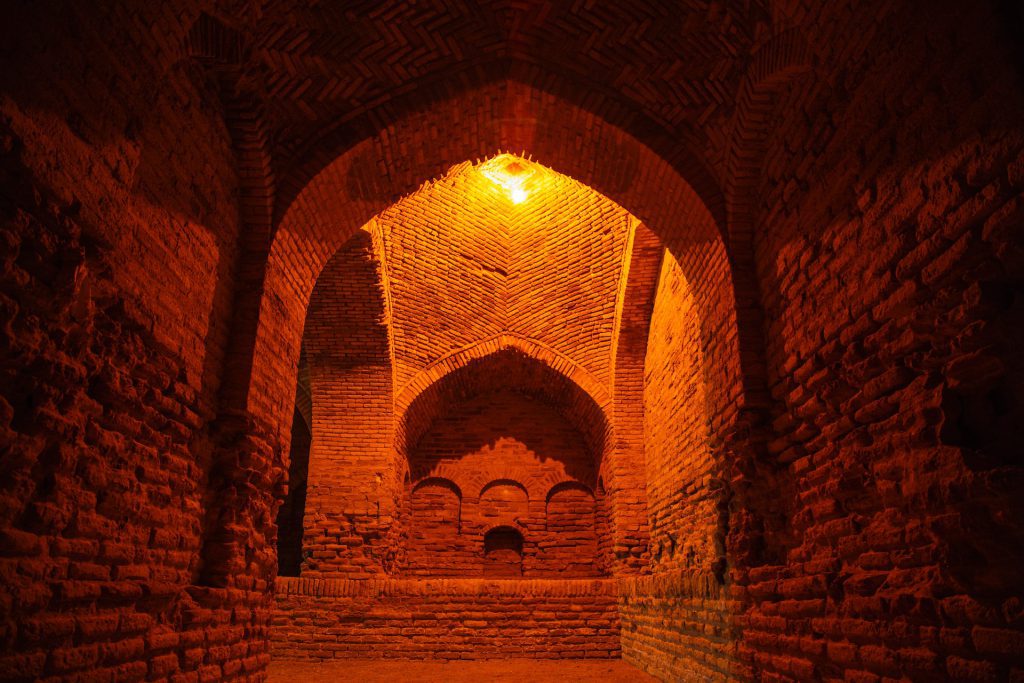
Let’s break down the term “caravanserai.” It’s like a combo of “caravan,” meaning a group of people traveling together, and “saray,” which is like a fancy word for a palace or a building with courts. So, a caravanserai is a cool place where groups of traders, pilgrims, and other travelers stop during their long-distance journeys. It’s not just a stopover; it’s a mix of cultures and stories.
The word “caravanserai” can be spelled in different ways, like caravansary, caravansaray, caravanseray, caravansara, and caravansarai. It’s a bit like a language buffet. Experts use it to talk about various kinds of places where people could rest, like inns or hostels, especially the ones outside city walls. These spots weren’t just about catching some Z’s; they were like mini-hubs of shared tales and cultural swaps. So, when we talk about this historical place, it’s like opening a door to a time when these stops were more than just places to crash—they were spots where people connected and traded stories.
Caravanserais History
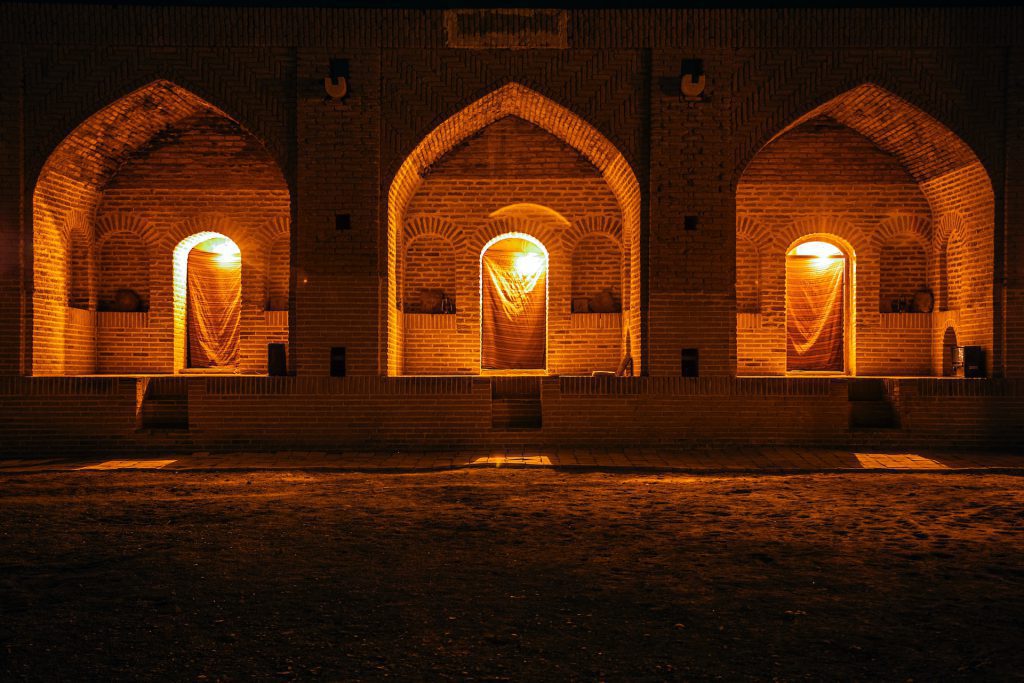
Considering Persian caravanserai origin, these spots have played an essential role in Iran’s history for centuries. They were established by various groups, including religious foundations, merchants’ guilds, and local rulers. The government also built many of them along the new roads during the reign of Shah Abbas the Great, who extended the road system throughout the country.
It is clear from the number and appearance of surviving caravanserais that there was a state architectural department responsible for their construction during the Safavid and Qajar eras. In addition to the road caravanserais, many were erected in cities as lodging houses, depots, and commercial offices near the bazaars. These city caravanserais resembled their road counterparts in form but often had two floors.
Today, caravanserai significance is that these historic structures stand as a testament to the ingenuity and resourcefulness of Iran’s people throughout history. From their protective walls to their unique architectural features, these locations offer visitors a glimpse into a bygone era. Whether you are exploring the desert or the bustling streets of a city, staying in a converted caravanserai is a must for anyone seeking to experience the rich culture and history of Iran.
Caravanserai Time Period
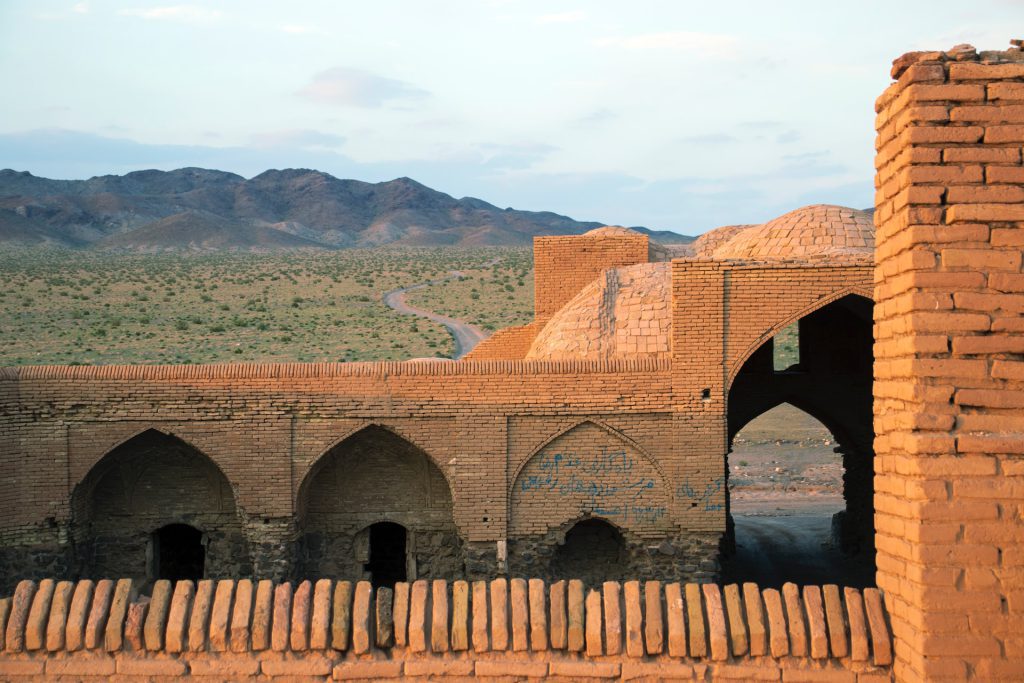
As trade routes grew busier, more resting spots called caravanserais popped up in Central Asia from the 10th to the 19th century. This wasn’t random – it happened when things were stable politically and socially. Imagine these historical locations as crucial trading posts, spread out across the region. They weren’t just places to rest; they were like the beating heart of trade routes, connecting people and goods. Surprisingly, these special stops stuck around for a long time, showing how important they were in the big picture of history.
Caravanserai Architecture
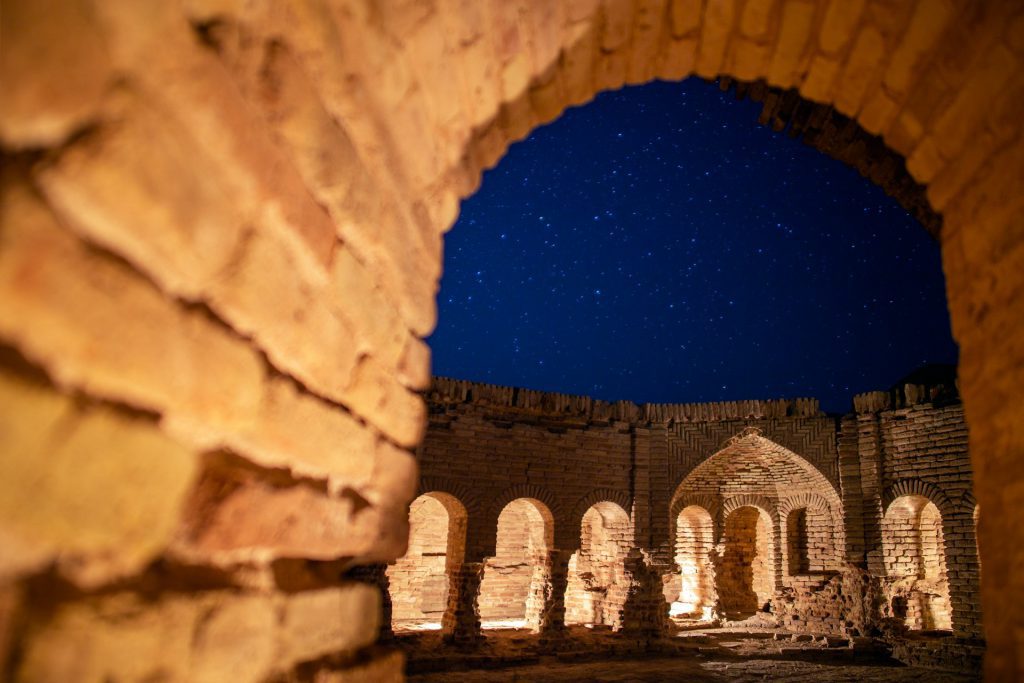
Caravansaries, cool structures found outside towns, usually take on a square shape. They’re surrounded by big walls with small windows at the top and only a few small holes lower down.
They are like a big square building. It’s more than just walls – it’s a comfy spot for tired travelers and their stuff. Walk inside, and you’ll see sunlight peeking through tiny windows, making cool patterns. There are also small holes low down that let in a bit of fresh air. Every stone and corner has stories from a time when these places were busy meeting spots for people from different places.
Saad al-Saltanah Caravanserai
The Saad al-Saltanah caravanserai in Qazvin stands out as a true marvel. This unique guest house is the largest roofed caravanserai in Iran, dating back to the late 19th century during the reign of Nasser al-Din Shah Qajar. It is also known as “Sara-i Saadieh” and “Sarai Saadat” and has served as the largest commercial center in the city in the past.
The architecture of this place is simply breathtaking. The labyrinth buildings are surrounded by beautiful rooms adorned with intricate artistic decorations. The spot features several entrances, seven large courtyards, rooms, corridors, and vestibules decorated with delicate brickwork. The most striking feature is the Chahar-Sooq section, which boasts a large dome adorned with spectacular tile works.
As you walk through the halls of this historic place, you can’t help but marvel at the ingenuity and craftsmanship of those who built it. Today, this historic location stands as a testament to Iran’s rich cultural heritage, welcoming visitors from around the world to experience its unique beauty and history firsthand.
Robat Sharaf Caravanserai
If you’re a history and architecture enthusiast, then Robat Sharaf Caravanserai is a must-visit destination on your travel list. Located in Sarakhs city, this ancient spot dates back to 1144 AD and exhibits some of the most diverse and beautiful brick decorations in Iranian architecture.
The facade of plaster and brick of Robat Sharaf will amaze you at first sight, as it looks like a large castle. However, once you step inside, the architectural masterpiece reveals itself as a palace-like mansion. With its two interrelated four Iwan-planned courtyards, Robat Sharaf represents an excellent example of Islamic architecture and the strict observance of all the principles of Iranian architecture in its construction.
As you explore this historical place, you will witness the architectural expertise of ancient Iranians. The brick decorations, the interplay of light and shadow, and the attention to detail make this structure an artistic wonder. So, if you want to experience the authentic taste of Iranian architecture, visit this historic place, and discover the ancient wisdom of the Iranian builders.
Ti Ti Caravanserai
Ti Ti Caravanserai is a true gem hidden in the green hills of north Iran. Built in the 17th century by Lady Ti Ti, the aunt of one of the Safavid kings, this historic place still stands strong and beautiful today. The complex is located in Siaah-kal city, along the ancient caravan route from Lahijan to Deylaman and Taleghan, making it a perfect stop for travelers in search of rest and shelter.
The location is made of a combination of brick and stone, adding to its impressive durability and architectural beauty. Inside, visitors are welcomed into a central courtyard surrounded by a porch passage and two short Evans. This historical site has been registered as an Iranian National Heritage, preserving its beauty for generations to come. With its stunning architecture and rich history, this place is a must-see destination for anyone exploring the beauty of Iran.
Qasr-e Bahram Caravanserai
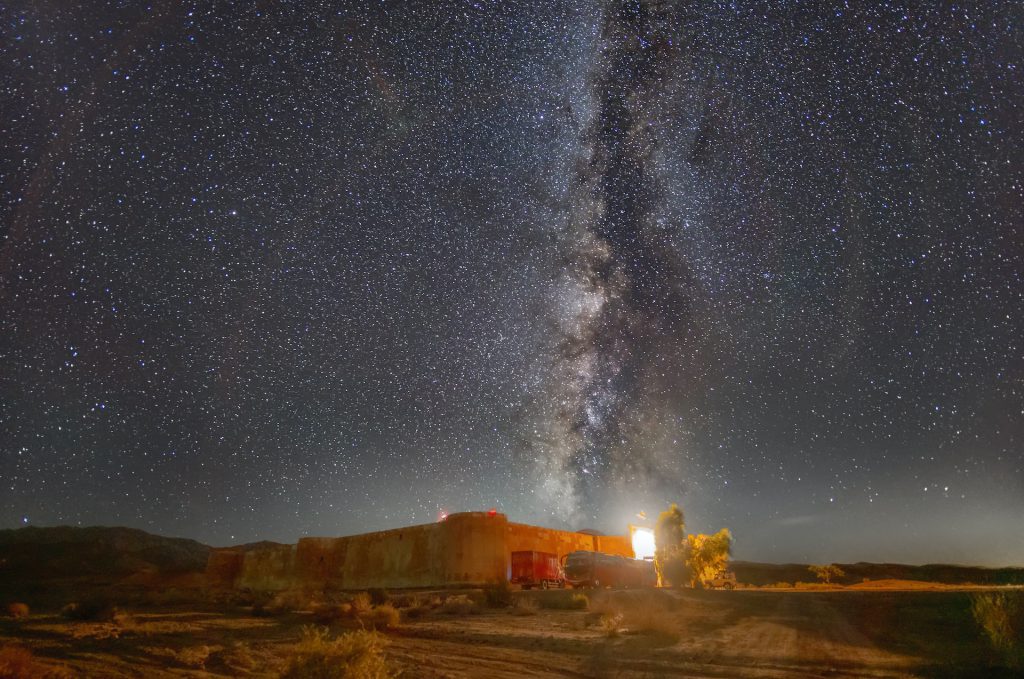
If you are fascinated by the ancient history of Iran, the Qasr-e Bahram Caravanserai is a must-visit. Located near the town of Garmsar, this spot was originally built during the Sassanid period and later rebuilt in the 16th century under King Abbas Safavid. What makes Qasr-e Bahram unique is its architecture, which distinguishes it from most other spots. Rather than the common brick and clay materials used in other structures, Qasr-e Bahram is constructed from large white limestone, which gives it a striking appearance.
As you enter through the northern or southern gates, you’ll be greeted by four tall, semi-circular towers that add to the monument’s magnificence. The gates lead you to a large octagonal courtyard, which is surrounded by 24 rooms. A notable feature of this courtyard is a deep decorative pond in the center that completes its traditional appearance.
Qasr-e Bahram is situated in the heart of the vast and sparsely populated Dasht-e Kavir, making it the perfect location for those seeking peace and tranquility. Recently, this unique location has also become popular with astronomers and astrophotographers as it offers a perfect spot to observe the night sky without any light pollution. So, whether you are an architecture enthusiast or an avid stargazer, this historic place is worth adding to your travel list.
Shah’s Mother Caravanserai
As you step through the grand entrance of the Shah’s Mother Caravanserai in Isfahan, you’ll find yourself transported back in time to the Safavid era. This remarkable complex, which includes a school, a small bazaar, and a caravanserai, is a shining example of the architectural works that have survived from this period. The caravanserai itself is a true gem, with intricate details that showcase the artistry and subtlety of Isfahani artists.
Built by the order of Shah Sultan Hussein Safavid over 300 years ago, the location was originally gifted to his mother and became an important place for trade in Isfahan. Despite being damaged during the Afghan invasion of Isfahan at the end of the Safavid rule, it was restored to its former glory and converted into the luxurious Abbasi Hotel. Today, the Abbasi Hotel continues to pay homage to the caravanserai’s rich history, offering visitors a charming environment with modern amenities that enhance the quality of their stay.
Luxurious Stay at the Abbasi Hotel Old Caravanserai
Looking for a unique and luxurious stay in Isfahan? Look no further than the Abbasi Hotel, a complex that was originally constructed as a royal caravanserai over 300 years ago. With its rich history and stunning architecture, the hotel offers guests a glimpse into the past while providing modern amenities and conveniences for a comfortable stay.
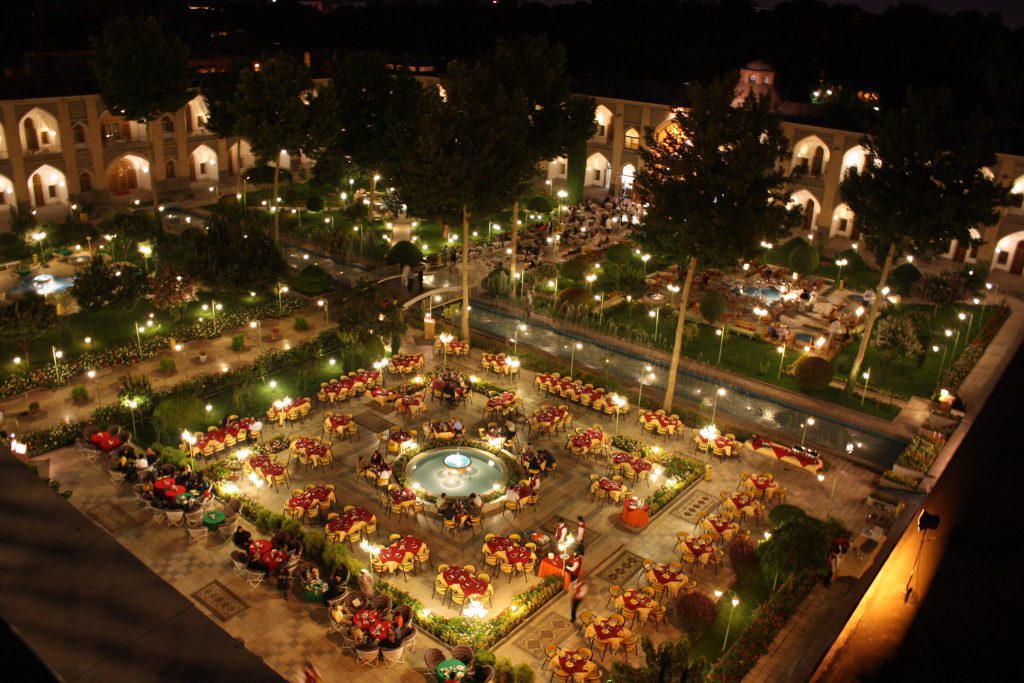
This location, which was gifted to Shah Sultan Hussein Safavid’s mother, became an important center for trade in Isfahan and was eventually restored and converted into the Abbasi Hotel in 1959. Today, the hotel showcases the intricate details and beautiful artistry of the caravanserai, with a museum of original pieces of art and a charming environment that is perfect for a relaxing stay. From the moment you step inside the Abbasi Hotel, you’ll feel as though you’ve been transported to a bygone era, surrounded by the rich history and culture of Iran.
Zein-o-Din Caravanserai
Discover the beauty of the Safavid era and experience a glimpse of life on the Silk Road by staying at the Zein-o-Din Caravanserai. Built by the order of Zein-o-din, the ruler of Kerman in the 17th century, this circular caravanserai is a masterpiece of Safavid architecture and a true gem of Iranian heritage. Constructed from clay bricks covered with Kaah-Gel, this two-storied structure boasts a 16-sided middle courtyard and a water pool, providing travelers with a serene oasis in the middle of the desert.
Originally designed to protect against the harsh desert environment and bandit attacks, the circular shape of such a place has withstood the test of time and remains a unique feature of this historical landmark. Nowadays, this historic location serves as a hotel, providing guests with a truly immersive experience of traditional Iranian hospitality. From the wooden gate to the dormitory corridors with their thick clothes for privacy, visitors can step back in time and enjoy the rustic charm of the past. And with Iranian rugs covering the floors and mattresses and blankets replacing modern beds, guests can truly feel like they are traveling on the Silk Road.
FAQs about Caravanserai
Q1: Where were caravanserais located?
A1: They were widely seen from Turkey to China. They offered not just food and a place to stay but also a chance for traders and travelers to swap goods, explore local markets, and connect with people from the big areas covered by the Silk Roads.
Q2: When were caravanserai invented?
A2: One of the first instances of this type of building is in Palmyra, a city in Syria. It started growing around the 3rd century BC and became a haven for travelers crossing the Syrian desert.
Q3: What are caravanserais in Iran?
A3: According to UNESCO’s website, caravanserais offered “shelter, food, and water for caravans, pilgrims, and other travelers.” Iran has over 200 of these ancient locations along historic trade routes connecting Asia and Europe, such as the Silk Road.
Q4: What is a caravanserai Silk Road?
A4: They were like inns by the side of the Silk Road. They offered shelter to travelers and also worked as a place where people could trade goods.
Q5: Do caravanserais still exist?
A5: They sometimes had a bathhouse and a room for prayer. Nowadays, many of the old locations that remain are falling apart stone structures. They are mainly interesting for historians and tour groups.
Last Words: Experience the Best of Iranian Caravanserai with a Customized Tour
In Iran, there are cool old buildings called caravanserais. Long ago, they helped Silk Road travelers stay safe from robbers and bad weather. Now, some are hotels, letting visitors enjoy the history.
The Caravanserai Silk Road had tall walls to protect travelers and their stuff. They were spaced about 20-25 miles apart. These structures show Iran’s history and strength.
If you are looking to travel to Iran and want to experience the best of Iranian caravanserai, then you should consider traveling with a customized and tailored tour. At To Iran Tour, we offer a range of Iran tours and travel packages that can be customized to your needs. Our team of professional tour operators has extensive knowledge of Iran and its rich history, and we work with you to create a personalized itinerary that includes visits to the most spectacular caravanserai in Iran.
Whether you are looking to explore the historical caravanserai of Robat Sharaf or the Abbasi Hotel Old Caravanserai, we can design a tour that fits your style of traveling. We are here to help you have an unforgettable experience in Iran.

